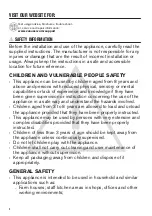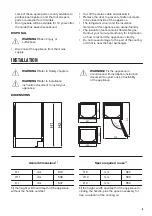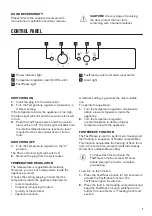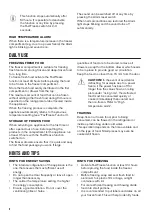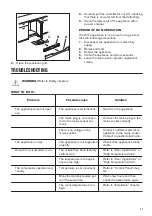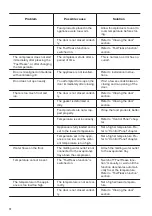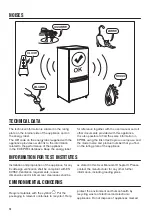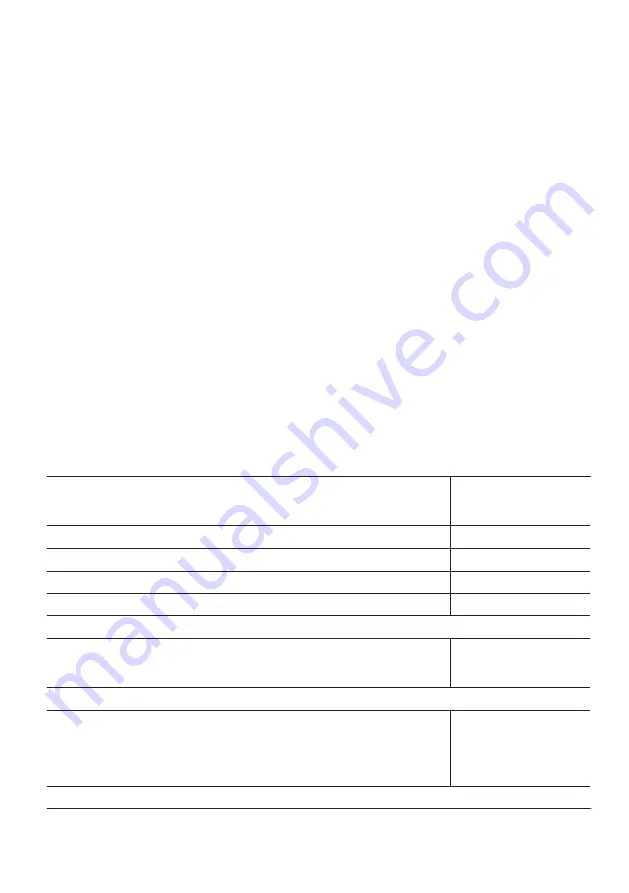
and to know when they should be used before
their deterioration.
• The food should be fresh when being frozen to
preserve good quality. Especially fruits and
vegetables should be frozen after the harvest to
preserve all of their nutrients.
• Do not freeze bottles or cans with liquids, in
particular drinks containing carbon dioxide -
they may explode during freezing.
• Do not put hot food in the freezer compartment.
Cool it down at room temperature before
placing it inside the compartment.
• To avoid increase in temperature of already
frozen food, do not place fresh unfrozen food
directly next to it. Place food at room
temperature in the part of the freezer
compartment where there is no frozen food.
• Do not eat ice cubes, water ices or ice lollies
immediately after taking them out of the freezer.
Risk of frostbites.
• Do not re-freeze defrosted food. If the food has
defrosted, cook it, cool it down and then freeze
it.
HINTS FOR STORAGE OF FROZEN FOOD
• The medium temperature setting ensures good
preservation of frozen food products.
Higher temperature setting inside the appliance
may lead to shorter shelf life.
• The whole freezer compartment is suitable for
storage of frozen food products.
• Leave enough space around the food to allow
air to circulate freely.
• For adequate storage refer to food packaging
label to see the shelf life of food.
• It is important to wrap the food in such a way
that prevents water, humidity or condensation
from getting inside.
SHOPPING TIPS
After grocery shopping:
• Ensure that the packaging is not damaged - the
food could be deteriorated. If the package is
swollen or wet, it might have not been stored in
the optimal conditions and defrosting may have
already started.
• To limit the defrosting process buy frozen goods
at the end of your grocery shopping and
transport them in a thermal and insulated cool
bag.
• Place the frozen foods immediately in the freezer
after coming back from the shop.
• If food has defrosted even partially, do not re-
freeze it. Consume it as soon as possible.
• Respect the expiry date and the storage
information on the package.
SHELF LIFE
Type of food
Shelf life (months)
Bread
3
Fruits (except citrus)
6 - 12
Vegetables
8 - 10
Leftovers without meat
1 - 2
Dairy food:
Butter
Soft cheese (e.g. mozzarella)
Hard cheese (e.g. parmesan, cheddar)
6 - 9
3 - 4
6
Seafood:
Fatty fish (e.g. salmon, mackerel)
Lean fish (e.g. cod, flounder)
Shrimps
Shucked clams and mussels
Cooked fish
2 - 3
4 - 6
12
3 - 4
1 - 2
Meat:
9


